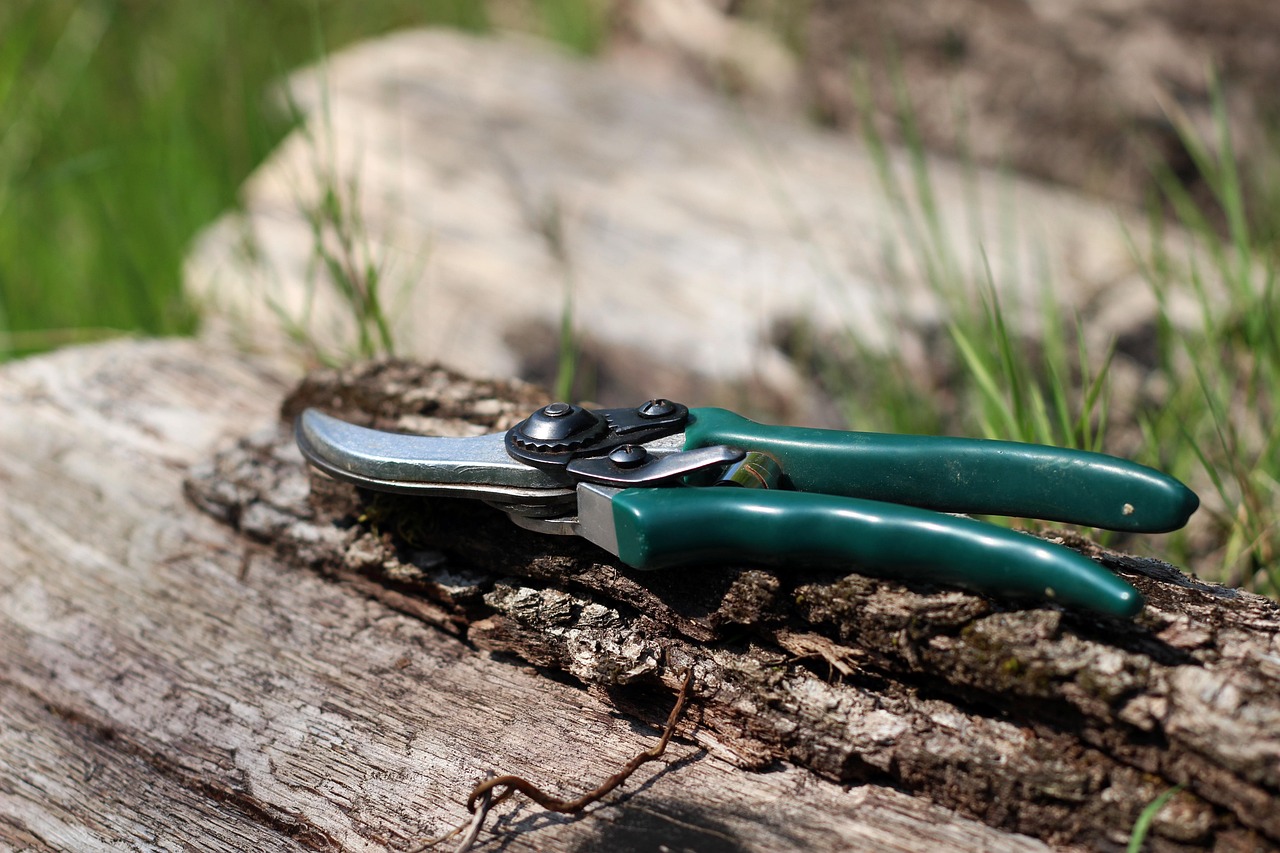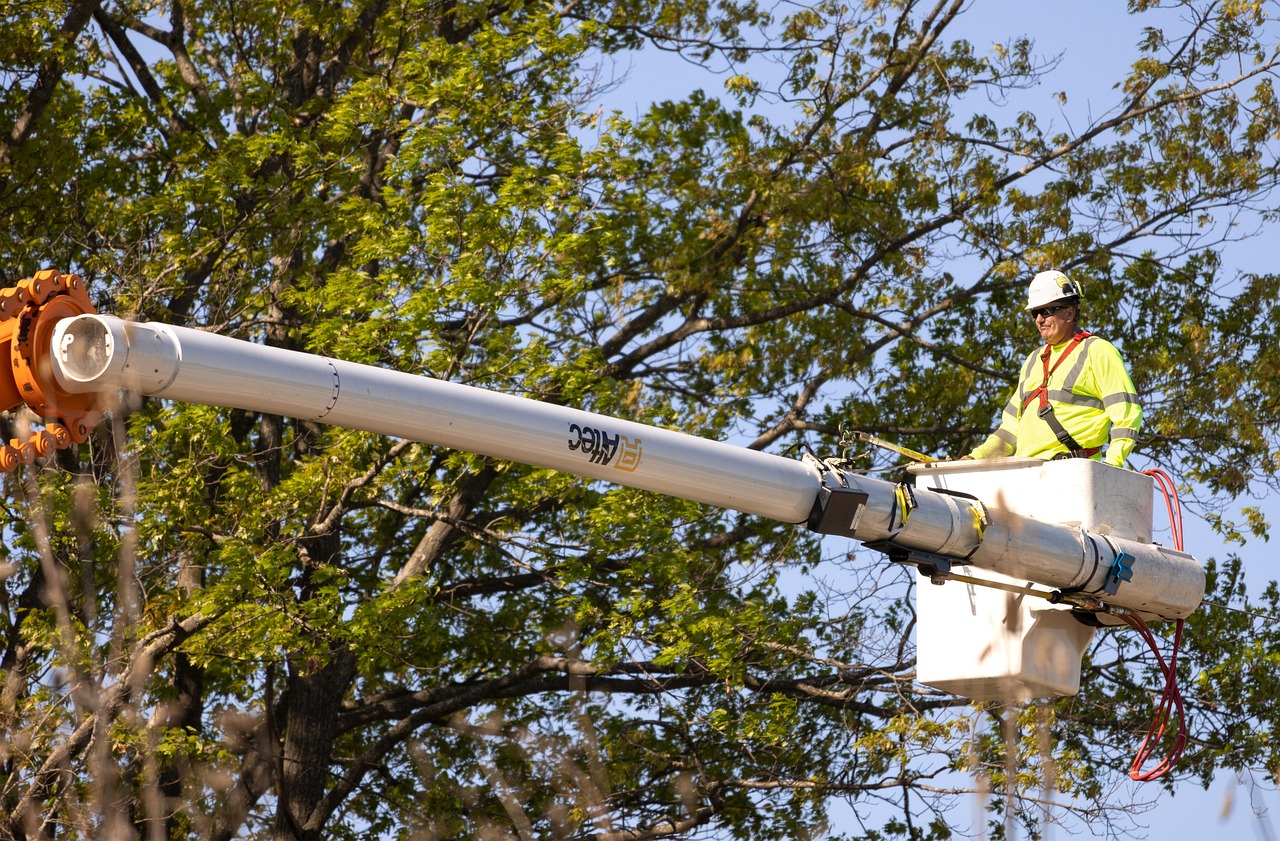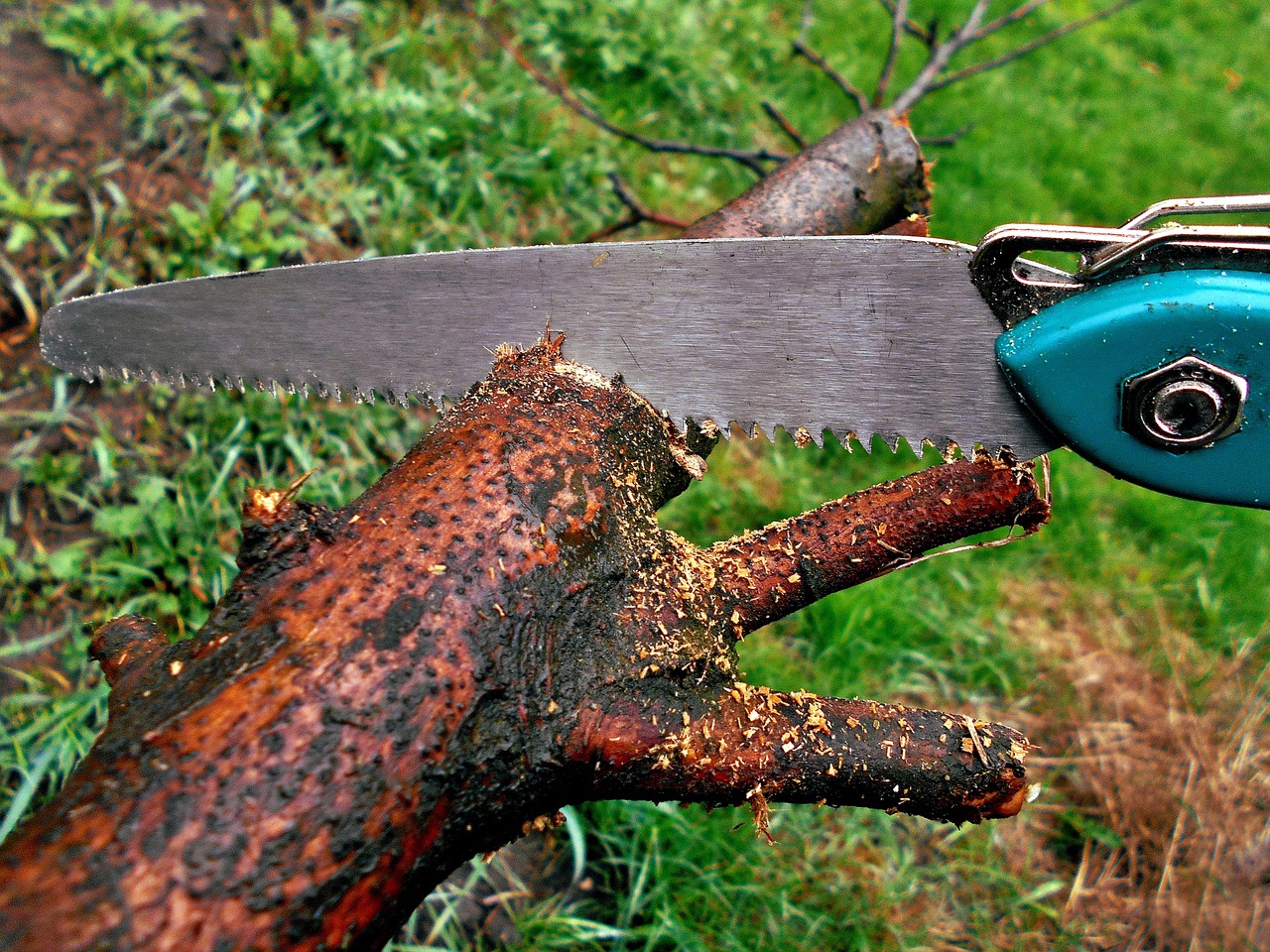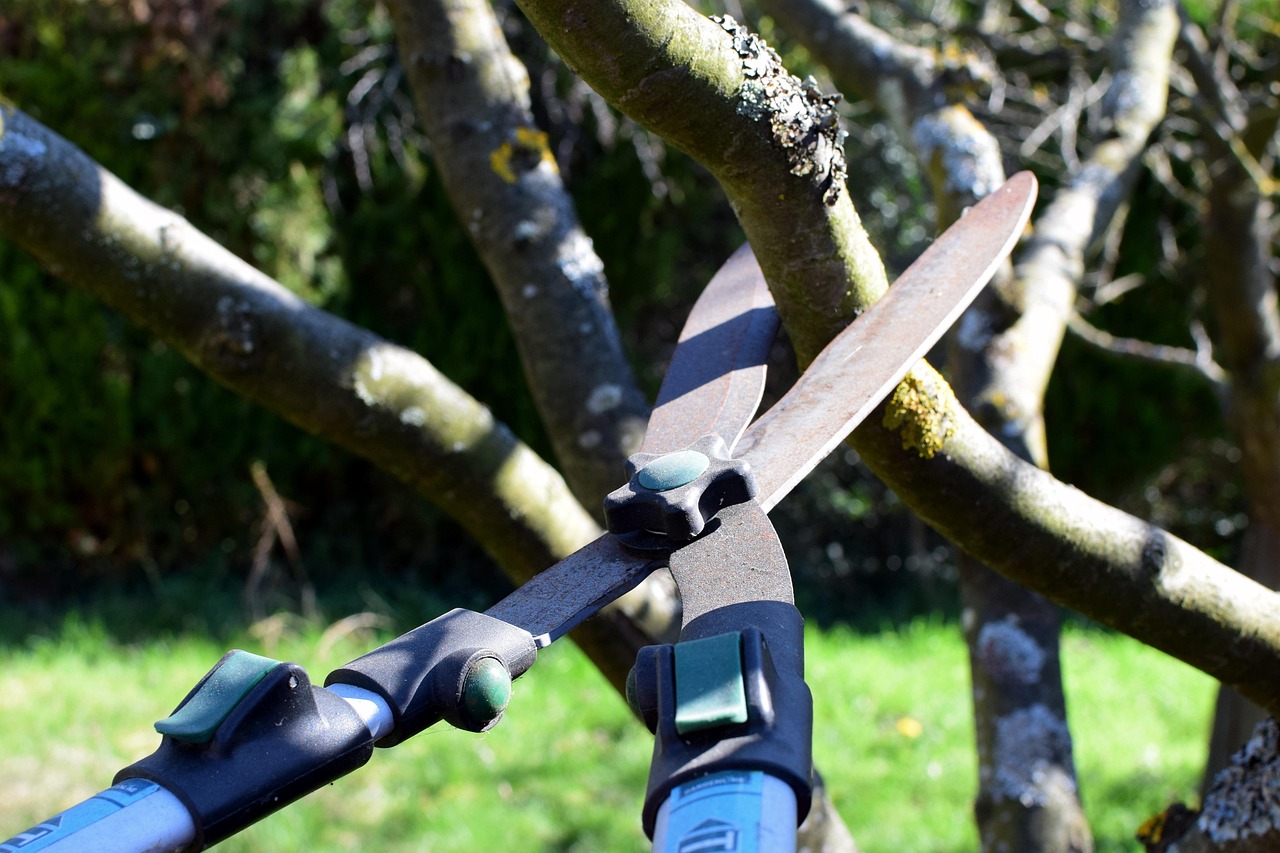Proper pruning of backyard trees is vital for their health and aesthetics, but avoiding common mistakes is key. Over-pruning, neglecting species-specific needs, and using incorrect tools can cause lasting damage. By understanding these pitfalls, homeowners can ensure effective tree care and maintain a lush, vibrant backyard environment.
Pruning is an essential aspect of tree care. It helps promote healthy growth, remove dead or diseased branches, and improve the overall appearance of your backyard trees. However, improper pruning can lead to significant damage. Understanding the common mistakes to avoid is crucial for any homeowner looking to maintain their trees effectively.

Many people may not realize that different tree species have unique pruning needs. Factors such as age, health, and time of year also play a significant role in determining the best pruning approach. To help ensure successful pruning, it is essential to have a solid understanding of what can go wrong during the process.
Common Mistakes in Pruning Backyard Trees
Here are some of the most frequent mistakes people make when pruning their trees:
- Over-pruning: Removing too many branches at once can shock the tree and hinder its growth.
- Ignoring Tree Species: Different trees have varying needs; not considering this can lead to improper cuts.
- Poor Timing: Pruning at the wrong time of year can damage the tree.
- Using Dull or Inappropriate Tools: Using the wrong tools can cause injury to the tree and make the job harder.
- Neglecting Tree Health: Failing to assess the tree’s health before pruning can exacerbate existing problems.
Pruning requires more than just cutting branches. It is an art that balances aesthetics with the tree’s health needs. Understanding these mistakes can help homeowners make informed decisions about their tree care practices.

Another crucial aspect of pruning is understanding the anatomy of a tree. Familiarity with the different parts can help you make better cuts that promote healthy growth.
| Tree Part | Description |
|---|---|
| Branches | The limbs that extend from the trunk and support foliage. |
| Crown | The upper part of the tree, including branches and leaves. |
| Trunk | The main support structure of the tree. |
| Roots | The underground system that anchors the tree and absorbs nutrients. |
Understanding these components can inform your pruning approach. For instance, cutting back too many branches from the crown can reduce foliage and hinder photosynthesis. It is vital to maintain a balance between removing dead or unhealthy branches while preserving enough foliage to support growth.
Timing Your Pruning Correctly
The timing of your pruning is just as important as the technique you use. Different trees have specific seasons when they benefit most from pruning. For example, many deciduous trees should be pruned during late winter or early spring before new growth begins. This timing allows for better healing and reduces the risk of disease.

On the other hand, some trees, like flowering species, may need pruning right after their blossoms fade. This approach ensures you do not remove buds that will bloom in the following season. Understanding when to prune is critical for effective tree care.
Tools for Pruning
The tools you use for pruning can greatly affect your results. It is essential to have sharp, clean tools to make precise cuts. Dull tools can tear branches rather than making clean cuts, leading to wounds that may allow pests or diseases to enter.
- Hand Pruners: Ideal for small branches and delicate work.
- Loppers: Great for cutting branches up to 2 inches thick.
- Saws: Necessary for larger branches that cannot be handled with pruners or loppers.
- Rakes and Tarps: Useful for cleaning up debris after pruning.
Having the right tools ready before starting ensures a smoother process. Furthermore, always clean your tools before and after each use to prevent disease spread between trees.

In summary, avoiding common mistakes in tree pruning can lead to healthier, more beautiful trees in your backyard. Understanding your trees’ needs, using proper timing, and employing the right tools are all vital components of successful pruning practices.
Understanding Tree Health and Growth Patterns
Before you begin pruning, it is crucial to understand the health and growth patterns of your trees. This knowledge will guide your pruning decisions and help you avoid mistakes that can harm your trees. Healthy trees can better withstand stress from pruning, while unhealthy trees may suffer more from even minor cuts.
Assessing tree health involves looking for signs of disease or damage. Common indicators include:
- Discolored Leaves: Yellow, brown, or wilting leaves may indicate nutrient deficiencies or disease.
- Dead Branches: Branches that fail to produce leaves or show signs of decay should be removed.
- Excessive Sap: If a tree is oozing sap, it could indicate injury or disease.
- Unusual Growth Patterns: Stunted growth or unusual shapes may signal health issues.
Regularly inspecting your trees can help you identify these signs early. If you notice any concerning symptoms, consult with a professional arborist before proceeding with pruning.
Proper Techniques for Pruning
Using the correct techniques during pruning is essential for the health of your trees. Here are some fundamental techniques to consider:
1. The Three-Cut Method
This method is especially useful for larger branches to prevent tearing the bark. It consists of three steps:
- First Cut: Make an undercut about one-third of the way through the branch. This cut prevents the bark from tearing when the branch falls.
- Second Cut: Make a second cut on top of the branch, a few inches away from the first cut. Cut all the way through until the branch falls.
- Third Cut: The final cut should be made at the branch collar, which is the swollen area where the branch joins the trunk. This helps the tree heal properly.
2. Thinning Cuts
Thinning cuts involve removing selected branches to improve airflow and light penetration. This technique promotes healthy growth and reduces the risk of disease. When making thinning cuts, focus on:
- Removing crossing branches.
- Cutting back branches that are too close together.
- Eliminating weak or diseased branches.
3. Heading Cuts
Heading cuts involve cutting back a branch to a bud or lateral branch. This technique is often used to control size and shape. However, it should be used sparingly as it can stimulate excessive growth and lead to bushy tops.
Avoiding Common Pruning Errors
While understanding techniques is vital, avoiding common errors is equally important in ensuring the health of your trees. Here are some common pruning errors to avoid:
- Making Flush Cuts: Cutting right against the trunk can damage the tree and slow healing.
- Leaving Long Stubs: Stubs can create entry points for pests and diseases.
- Pruning Too Late in the Season: Late pruning can remove buds that would produce flowers or leaves.
- Ignoring Safety Precautions: Always wear protective gear and be cautious when using ladders or working with large branches.
Acknowledging these common mistakes can help prevent damage and promote better growth in your trees.
The Importance of Aftercare
After pruning, providing proper care to your trees is essential for recovery and growth. Here are some aftercare tips:
- Watering: Ensure your tree receives adequate water, particularly during dry spells. Newly pruned trees may need extra hydration as they recover.
- Mulching: Adding mulch around the base of the tree can help retain moisture and suppress weeds.
- Monitoring: Keep an eye on your tree for any signs of stress or disease after pruning.
Caring for your trees post-pruning enhances their ability to recover from cuts and maintain overall health.
When to Seek Professional Help
While many pruning tasks can be handled by homeowners, certain situations may require professional intervention. Consider hiring an arborist if you encounter:
- Trees that are too tall or large for safe access.
- Trees with significant damage or disease issues.
- A lack of knowledge about specific species’ needs.
- A complex pruning task that requires advanced techniques.
Professional arborists have the experience and tools to ensure that trees are pruned safely and effectively, minimizing risks to both the tree and the individual performing the work.
Seasonal Considerations for Pruning
Understanding the best times to prune is crucial for the health and growth of your trees. Different seasons offer distinct advantages and potential drawbacks for pruning activities. Here’s a breakdown of seasonal considerations that can guide your pruning schedule.
Winter Pruning
Winter is often regarded as the best time for pruning many deciduous trees. During this dormant season, trees are less stressed, and their structure is more visible without leaves. Benefits of winter pruning include:
- Minimal Stress: Trees experience less sap loss and stress during dormancy.
- Better Visibility: The absence of leaves allows for easier identification of branches that need trimming.
- Encouragement of New Growth: Pruning in late winter can stimulate healthy growth in the spring.
However, be cautious with late winter pruning. If done too close to spring, you may inadvertently remove buds that are set to bloom.
Spring Pruning
Spring is another critical time for pruning, particularly for flowering trees. Here are some considerations:
- Flowering Trees: Prune spring-flowering trees immediately after they bloom to avoid cutting off next year’s flowers.
- New Growth: Spring pruning can encourage new growth and improve air circulation in crowded areas.
- Pest Awareness: Be vigilant about pests, as some insects may be more active in spring.
Timing is essential; pruning too late in the season can stress the tree and lead to poor recovery.
Summer Pruning
Summer pruning is typically less common but can be beneficial for certain situations. Consider the following:
- Shaping: Summer pruning helps shape trees and control their size without encouraging excessive growth.
- Pest Control: Removing diseased branches in summer can help prevent the spread of pests.
- Increased Sunlight: Thinning out dense foliage allows more sunlight to reach lower branches and promotes healthier growth.
Keep in mind that summer pruning may lead to more sap loss, which can attract pests. Use this method judiciously.
Fall Pruning
Fall is generally not recommended for most types of pruning. However, there are exceptions:
- Dead or Diseased Branches: Removing these can prevent issues over the winter months.
- Safety Hazards: Prune branches that pose risks, especially those hanging low or near structures.
Many trees will be entering dormancy in the fall, making them more susceptible to stress from pruning. Therefore, limit major cuts during this season.
Understanding Tree Types and Their Needs
Different tree species have unique needs when it comes to pruning. Knowing these needs can help you avoid mistakes and ensure that each tree receives the appropriate care. Below are some common tree types and their specific pruning requirements.
| Tree Type | Pruning Time | Special Considerations |
|---|---|---|
| Deciduous Trees | Late Winter or Early Spring | Aim to remove dead or crossing branches, and promote an open canopy. |
| Evergreen Trees | Late Spring | Avoid heavy pruning; focus on shaping and removing dead branches. |
| Flowering Trees (Spring-Blooming) | Immediately After Blooming | Avoid cutting off next year’s buds; focus on dead or damaged branches. |
| Citrus Trees | Semi-Annual (Spring and Summer) | Aim for light pruning to maintain shape and health; avoid heavy cuts. |
Being aware of the specific needs of your trees can prevent mistakes during the pruning process. Each type has its nuances that require careful attention to ensure healthy growth and flowering.
The Role of Weather in Pruning
The weather can significantly impact your pruning efforts. It is essential to consider both current conditions and upcoming forecasts when planning a pruning session. Here are some weather-related factors to keep in mind:
- Damp Conditions: Pruning in wet weather can increase the risk of fungal infections. Aim for dry days when possible.
- Extreme Temperatures: Avoid pruning during extreme heat or cold. Stress from temperature extremes can hinder recovery.
- Windy Days: High winds can make it difficult to work safely with tools and branches. Choose calm days for your tasks.
Caring for your trees involves understanding these environmental factors. Planning your pruning around favorable weather conditions will enhance your success and minimize stress on the trees.
Additional Tips for Successful Pruning
Beyond the common mistakes and seasonal considerations, there are a few additional tips that can enhance your pruning experience and outcomes. These can help ensure that you not only avoid errors but also promote the health and beauty of your trees.
Educate Yourself on Tree Biology
Understanding the biology of trees can significantly improve your pruning skills. Familiarizing yourself with how trees grow and respond to pruning will provide insights into why certain methods work better than others. Here are key concepts to grasp:
- Growth Hormones: Trees produce hormones called auxins that promote growth in the tips of branches. Knowing this can help you decide where to prune to encourage new growth.
- Callus Formation: Trees form calluses over wounds as a healing response. Understanding this process is vital when making cuts to ensure they heal properly.
- Bud Development: Learning how buds develop can guide you in making cuts that will enhance flowering and foliage.
Investing time in learning about tree biology can pay off in healthier trees and more effective pruning techniques.
Keep a Pruning Diary
Maintaining a pruning diary can be a valuable tool for tracking the health and growth of your trees. Notes should include:
- Date of pruning and specific trees pruned.
- Details about what was cut, including branch size and location.
- Observations regarding tree health before and after pruning.
- Weather conditions during pruning sessions.
This record can help you identify patterns over the years, allowing for more informed decisions in future pruning sessions.
Join Local Gardening Groups
Engaging with local gardening or tree care groups can provide additional resources and support. Here are some benefits of joining such groups:
- Shared Experiences: Learn from the experiences of others in your community who have faced similar challenges.
- Workshops and Classes: Many groups offer hands-on training sessions led by experts, enhancing your skills.
- Networking Opportunities: Connect with professionals who can offer advice and services when needed.
Building a network can deepen your understanding of tree care and provide support when tackling larger projects.
Conclusion
Pruning backyard trees is a critical aspect of maintaining their health and appearance. By understanding common mistakes, seasonal considerations, the biology of trees, and proper techniques, homeowners can significantly enhance their pruning practices. Proper timing, tool selection, and aftercare are equally important to ensure that trees recover well from cuts.
Avoiding errors such as over-pruning, improper timing, and neglecting tree health will lead to healthier trees that thrive in your backyard. Furthermore, being aware of environmental factors and seeking professional help when necessary will protect both the trees and the individual performing the work.
Ultimately, successful pruning requires a combination of knowledge, skill, and attentiveness. With these insights in hand, you can confidently approach your tree care tasks, ensuring that your backyard remains vibrant and healthy for years to come.
